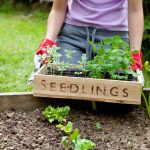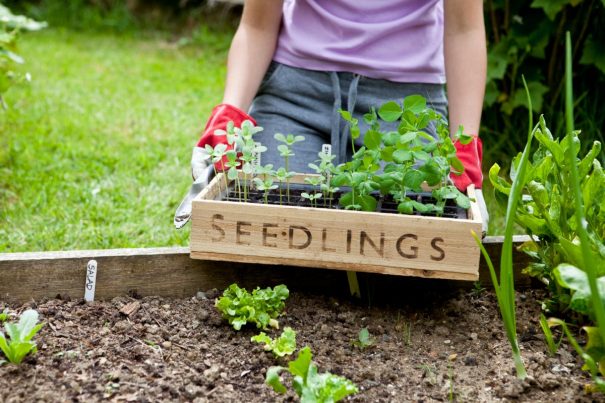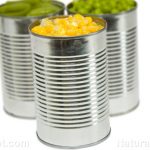
Professional gardening tips that even newbies can follow
Tuesday, September 11, 2018 by Zoey Sky
http://www.starvation.news/2018-09-11-professional-gardening-tips-that-even-newbies-can-follow.html

Preppers know that gardening is a lucrative and relaxing hobby, but getting started may seem complicated for newbie gardeners. If you don’t know where to start, here are some tips that can help you set up a well-maintained garden in your yard or on your homestead. (h/t to Survivopedia.com.)
1. Get basic gardening equipment and tools
Must-have gardening tools include a sturdy pair of pruning scissors for trimming bushes and plants and cutting off dead branches or flower heads. With a pair of lopping pruners, you can trim well-established and larger plants.
Digging and raking tools like a garden fork, spade, and trowel are necessary to get soil for your plants. Use the spade and trowel to dig holes for plants. Meanwhile, the garden fork can be used to break up big clumps of soil or remove dead plant roots.
Try to get one or two rakes with metal prongs so you can remove stones or level the soil before you get started. A plastic rake will do for basic maintenance tasks like clearing leaves.
For watering tools, you can use either a watering can or a garden hose. Use a watering can for smaller and delicate seedlings and plants, then use a garden hose for heavy-duty tasks like watering established trees.
When removing weeds, you’ll require a gardening knife, a forked trowel, and a walk-behind weed eater (but only if you have a large plot of land). These tools can make it easier to trim and uproot invading plants.
2. Choosing the right plants
After getting your gardening tools, choose the plants you’ll cultivate in your garden. This requires some planning because your decisions will be affected by the soil type in your garden.
If you’re not sure what you want to plant, check the neighbors’ gardens. Chances are they’re already growing things that are suited to your location and the soil type in your neighborhood.
Using only seeds to start your garden can get expensive and frustrating. Using started plants is preferable if you want immediate results. Consider combining the two options by getting seedlings from local nurseries and planting seeds for flowers that will grow well in your location.
One common mistake to avoid is mixing too many annual plants because they’ll probably die off after growing for only one year. If you want color and longevity in your garden, balance annual and perennial plants.
Don’t get one plant of each kind because this can make your garden look disorganized. To create an eye-catching and well-designed landscape, repeat the same hardscaping materials (e.g., paths, planters, and pots) and plants in different areas in your garden. (Related: 7 Trouble-free vegetables to grow for newbie gardeners.)
Include some of these plants if you want to cultivate a survival garden that will provide you with food for your stockpile:
- Beans
- Beets
- Carrots
- Corn
- Herbs
- Kale
- Lettuce
- Tomatoes
- Turnips
- Winter squash
3. Improve the garden soil
To enrich your garden soil, try working in compost to the top 20 to 30 centimeters (eight to 12 inches) of the soil using a garden fork/spade. Once several months have passed, the compost should be broken down. Enrich garden soil with nutrients just before spring starts or during winter.
If you don’t want to dig, mix soil with compost. However, this method will take much longer.
To mix soil with compost:
- Mark out and cover the plant bed in five layers of paper or newspaper.
- Fill the area with five to seven centimeters (two to three inches) of compost. Let this sit for about four months.
- In four months, the papers will decompose. The nutrients in the compost will then combine with the soil underneath.
4. Water the plants correctly
When watering plants, give them just enough water to survive without letting the soil get waterlogged. Take your time when watering your plants. This will let the water reach deep into the ground.
Garden soil should be moist at about five to six centimeters (two to three inches) below the surface. The amount of water plants will need will depend on factors like air moisture, the temperature, and the types of soil and plants. If the weather is often dry and hot, plants will need frequent watering and vice versa.
Even the same plants in different stages of growth will require different amounts of water. Try to water young trees daily to encourage healthy roots and development. Depending on the temperature and weather, established plants will only need to be watered once every three or four days.
5. Get rid of garden pests and weeds
When plants start growing in your garden, you need to prevent pests and weeds from destroying them. Remove weeds at least once a week to keep them under control. Cover the soil with mulch or straw to help control the weeds and manage the moisture level. If the soil in your garden is moist, it’ll be easier to remove weeds.
Careful planning is key to preventing the spread of garden bugs and pests. Take care of your plants to keep harmful insects away, and make sure the plants get enough essential nutrients, sunlight, and water regularly.
With some research, hard work, and tips from the pros, you can set up your own survival garden.
You can read more articles about professional gardening tips for newbies at HomeGardeningNews.com.
Sources include:





